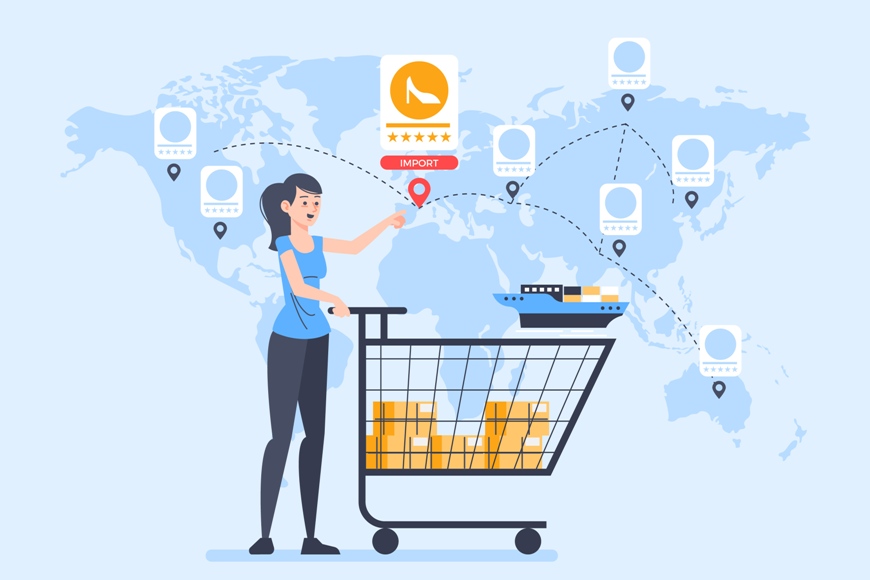
In today’s fast-paced world where technology is advancing. A new word has emerged that is changing the way businesses interact with their customers. Combining the terms “Physical” and “Digital”. Phygital refers to the seamless integration of physical and digital elements. To create advanced and engaging customer experiences. In this blog, we will explore the world of Phygital and its definition. With growing interest around it, and key product features to revolutionize customer engagement.
Origin of Phygital
In 2007, the term Phygital was coined by Chris Weil by the advertising agency Momentum Worldwide. It refers to building relationships with customers in both physical and digital worlds. This approach recognized the importance of communication in modern business and communication.
Phygital: A combination of Physical and Digital Realms
Phygital is a term coined in 2007 by Chris Weil of the advertising agency Momentum Worldwide. It captures the essence of blending the physical and digital worlds. At its core, Phygital molds products. They combine to provide a complete customer experience that transcends traditional boundaries.
Improved Customer Experiences
The concept of embodiment has gained more traction. where consumers are demanding more personal interaction. Leading companies are adopting this approach to differentiate themselves in the competitive landscape. For example, the Nike House of Innovation store. NYC has introduced a digital playground. Where consumers can try on sneakers using augmented reality (AR) technology. This innovative approach not only engages consumers. But drives them and is also involved in a memorable experience.
Personalizing experiences
Hyper-personalization, a key feature of physical movement, treats each client as unique. Deloitte defines hyper-personalization. In the most advanced way, companies can target a single customer. This trend drives the increased demand for personalized communication. Research from McKinsey shows that. 71% of consumers expect personalization and 76% are disappointed. when companies fail to deliver customized products
The Components of a Phygital Experience
A successful Phygital experience hinges on the synergy between several essential components:
1. Physical Spaces: Brick-and-mortar establishments serve as the foundation of Phygital experiences. These spaces act as touchpoints. where customers can engage with products, services, and brand representatives.
2. Digital Interfaces: The digital aspect encompasses websites, mobile apps, and social media platforms. These interfaces provide customers with personalized interactions, product information, and seamless purchasing options.
3. Data Integration: Central to Phygital success is the integration of customer data. This enables businesses to offer tailored experiences and recommendations. By fostering a deeper connection with the audience.
4. IoT and Connectivity: Internet of Things plays a pivotal role in Phygital experiences. By enabling devices to communicate and enhance user experiences. Like, a smart mirror at a retail store’s dressing rooms gives you real-time product details. Also, suggest complementary products.
Transforming Retail through Phygital Innovation
The retail sector had a remarkable transformation through the infusion of Phygital experiences. Traditional shopping models are evolving to accommodate changing consumer behaviors and preferences. Here’s how Phygital is reshaping the retail landscape:
1. Seamless Shopping: Phygital retail integrates online and offline channels. Enabling customers to browse products online and make purchases in-store, or vice versa. This creates a fluid shopping journey that aligns with the customer’s preferences.
2. Interactive Displays: Augmented reality (AR) and virtual reality (VR) technologies elevate in-store experiences. Interactive displays allow customers to visualize products in real-world settings. By making informed purchasing decisions.
3. Personalized Recommendations: Phygital experiences leverage data analytics to provide tailored product recommendations. This enhances cross-selling and upselling opportunities while deepening customer engagement.
Revolutionizing Marketing Strategies with Phygital Touchpoints
In the realm of marketing. Phygital experiences introduce innovative avenues for brands to connect with their target audience:
1. Immersive Campaigns: Brands can create captivating campaigns. which can bridge physical events with digital engagement. For instance, hosting a product launch event with live streaming. That encourages virtual participation while maintaining a physical presence.
2. QR Code Integration: QR code, is a bridge between physical objects and digital content. Brands can use QR codes. To provide more product information, discounts, or access to exclusive online content.
3. Location-Based Engagement: Engage with users based on physical location. Geotargeting technologies can deliver personalized offers and notifications. when customers are near a store.
The Future of Phygital: Innovations on the Horizon
As technology continues to advance, the potential of Phygital experiences is boundless. Future innovations may include:
1. Holographic Experiences: Advanced holographic displays could enable customers. who can interact with lifelike digital representations of products, enhancing the sensory experiences.
2. Neuro-Responsive Interfaces: Brain-computer interfaces could allow customers to engage with digital interfaces. By using their thoughts, opening new realms of personalized interaction.
3. AI-Driven Personalization: Artificial intelligence could analyze customer behavior and preferences in real time. By delivering hyper-personalized experiences across physical and digital touchpoints.
Conclusion:
To unlock unparalleled growth and customer engagement. By intertwining physical and digital realms. Brands can create immersive and meaningful interactions that resonate with the modern consumer. As technology continues to evolve. The journey towards a Phygital future promises to be both exciting and transformative.
Read Next Blog:
What Is The Command Key On Windows Keyboard







